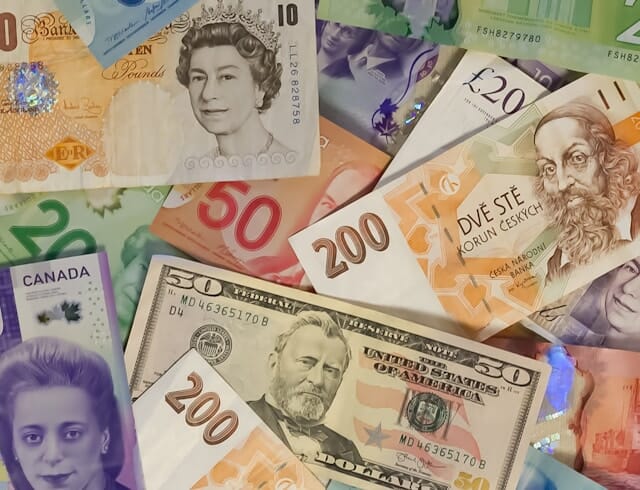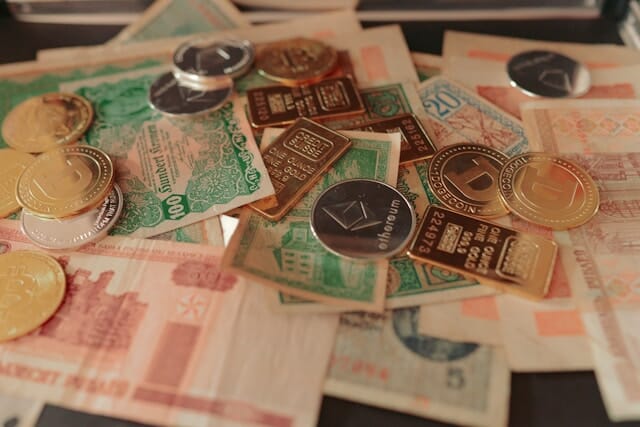Currency exchange rates are the heartbeat of the global economy. They determine how much one country’s money is worth compared to another’s, affecting everything from the price of your morning coffee (if it’s imported) to the profitability of multinational corporations. But what drives these rates to fluctuate—sometimes dramatically—day after day? In this in-depth guide, we’ll uncover the five major factors that influence currency exchange rates: interest rates, inflation rates, economic growth and indicators, political stability, and trade balances. Whether you’re a forex trader looking to sharpen your skills, a business owner managing international deals, or just someone curious about why the dollar or euro moves the way it does, this article will give you the tools to understand the forces at play.
At its simplest, an exchange rate reflects the supply and demand for a currency in the global foreign exchange (forex) market. When demand for a currency rises, its value increases, when supply outpaces demand, its value falls. But this balance is shaped by a complex web of economic and political dynamics. By the end, you’ll see how these five factors interact and why keeping an eye on them can help you navigate the unpredictable world of currency exchange.
Factors that Influence Exchange Rates
Exchange rates are influenced by a mix of economic, political, and market-driven factors. Understanding these can help you make smarter financial decisions, whether you're investing, traveling, or sending money abroad.
Interest Rates
Interest rates are like the puppet masters of currency values, pulling strings behind the scenes in the forex market. Set by central banks—like the Federal Reserve in the U.S., the Bank of England, or the European Central Bank—these rates influence how much it costs to borrow money and the returns you earn on savings or investments. When a central bank hikes interest rates, the country’s currency often strengthens. Why? Because higher rates attract foreign investors seeking better returns, boosting demand for that currency.
Imagine this: if the U.S. offers a 5% return on government bonds while Japan sticks at 1%, investors will flock to the U.S., buying dollars to invest. This surge in demand pushes the dollar’s value up against the yen. On the flip side, if rates drop, the reverse happens—investors pull out, demand falls, and the currency weakens.
Take the early 1980s as a real-world example. Under Chairman Paul Volcker, the Federal Reserve raised interest rates to double digits to tackle runaway inflation. The result? The U.S. dollar soared as foreign capital poured in, drawn by those juicy returns. More recently, when the Fed hinted at rate hikes in 2022, the dollar strengthened against a basket of currencies, reflecting market anticipation.
But it’s not just about the rate itself—expectations matter too. If traders think a central bank will raise rates soon, they’ll start buying the currency early, driving its value up before the announcement even hits. This interplay between policy and perception makes interest rates a cornerstone of exchange rate movements.
Inflation Rates
Inflation is the silent thief of purchasing power—and a major player in currency exchange rates. It measures how fast prices for goods and services are rising. A country with low, stable inflation typically enjoys a stronger currency because its money holds its value better over time. High inflation, however, can erode a currency’s worth, sending its exchange rate tumbling.
This ties into something called purchasing power parity (PPP), a theory suggesting exchange rates should adjust so that identical goods cost the same everywhere. Picture a burger costing $5 in the U.S. and £4 in the UK. If the exchange rate is $1 = £0.80, the price evens out. But if U.S. inflation spikes and that burger jumps to $6 while UK prices stay steady, the dollar should weaken to reflect its reduced buying power.
In practice, high inflation signals trouble. Investors ditch currencies losing value fast, favoring those from low-inflation countries. Take Zimbabwe in the late 2000s: hyperinflation hit, and the Zimbabwean dollar collapsed—billions of it couldn’t buy a loaf of bread, let alone match the U.S. dollar. Contrast that with Switzerland, where low inflation has long bolstered the Swiss franc’s reputation as a rock-solid currency.
Central banks often step in here. Rising inflation might prompt a rate hike, which could prop up the currency. But if inflation runs wild unchecked, depreciation is almost inevitable. Look at Turkey in recent years: double-digit inflation has hammered the lira, despite occasional rate increases.
Economic Growth
Economic growth is the engine of a nation’s prosperity—and its currency’s strength. Measured by indicators like Gross Domestic Product (GDP), employment rates, consumer spending, and industrial output, strong growth signals a thriving economy. That’s catnip for investors, who pour money in, buying the local currency and driving its value up.
Think of it this way: a booming economy means higher profits for companies, more jobs, and confident consumers. Foreign investors want in on that action, whether it’s stocks, bonds, or real estate. To invest, they need the local currency, boosting demand. Plus, rapid growth often hints at future interest rate hikes to cool things off, adding another layer of currency support.
The U.S. in the late 1990s is a prime example. The tech boom fueled robust GDP growth, and the dollar surged as investors piled in. Compare that to Japan’s “Lost Decade” in the same period—stagnation and deflation weakened the yen as confidence waned.
Weak growth flips the script. During recessions, investors flee, demand drops, and central banks might cut rates to stimulate things, further pressuring the currency. The 2008 financial crisis saw the euro wobble as Europe grappled with sluggish recovery, while emerging markets sometimes fared worse.
Forex traders live for economic data releases. A stellar U.S. jobs report—like the Non-Farm Payrolls—can send the dollar soaring in minutes. A dismal GDP figure? The opposite. These indicators aren’t just numbers; they’re snapshots of economic vitality that move markets.
Political Stability
Politics might seem distant from finance, but when it comes to currency exchange rates, it’s a heavyweight contender. Political stability builds trust; instability breeds chaos. Investors love predictability—stable governments with clear policies make a country a safe bet. Uncertainty, like coups, protests, or war, sends them running, tanking the currency.
Look at the Arab Spring in 2011. Egypt’s political upheaval saw the Egyptian pound plummet as investors fled the turmoil. Similarly, Brexit uncertainty in 2016 battered the British pound, with its value dropping sharply after the referendum. Markets hate surprises, and political shocks deliver them in spades.
Stable nations, though, reap rewards. Switzerland’s political neutrality and strong institutions make the Swiss franc a “safe haven” currency—its value often climbs during global crises. The U.S. dollar, backed by a relatively steady democracy, enjoys similar trust.
Elections can stir the pot too. The 2020 U.S. election saw dollar swings as markets weighed Trump’s and Biden’s economic visions. Policy matters as well—pro-growth moves like tax cuts can lift a currency, while reckless spending or corruption can sink it.
Trade Balances
Last but not least, trade balances—the difference between a country’s exports and imports—round out our list. A trade surplus (exports outpacing imports) boosts a currency; a trade deficit (imports exceeding exports) weighs it down. It’s all about supply and demand in action.
When a country exports heavily, foreign buyers need its currency to pay for those goods. More exports, more demand, stronger currency. China’s massive trade surpluses have long supported the yuan, though government controls temper its rise. Japan, another export titan, sees similar effects with the yen.
Deficits work the other way. Importing more means selling your currency to buy foreign goods, flooding the market and weakening its value. The U.S. runs chronic trade deficits, yet the dollar holds firm—why? Its status as the world’s reserve currency and huge investment inflows offset the drag.
The current account, which includes trade plus investment income and transfers, adds nuance. A surplus here signals a country’s lending power, propping up its currency. But trade alone isn’t everything—capital flows can override it. Australia, with trade deficits, still boasts a solid dollar thanks to commodity exports and investment.
Trade balances are a slow burn compared to, say, interest rate shocks, but they’re foundational. They reflect a country’s economic competitiveness, and over time, they shape its currency’s trajectory.
How Currency Rates Influence Investments
Currency exchange rates play a pivotal role in shaping investment outcomes, especially in today’s interconnected global economy. Fluctuations in currency values can directly affect the profitability of investments, influence international trade and business operations, and have broader implications for inflation, interest rates, and market sentiment.
When investors hold assets in a foreign currency—such as international stocks, bonds, or real estate—exchange rate movements directly alter the value of those investments when converted back to their home currency. This introduces what’s known as currency risk or exchange rate risk.
If the foreign currency strengthens against the investor’s home currency, the investment’s value rises in home currency terms. For example, a U.S. investor holding Japanese stocks benefits if the yen appreciates against the dollar, as the dollar value of the investment increases even if the stock price in yen stays constant.
What Are Exchange Rates?
An exchange rate is the value of one currency expressed in terms of another currency. It represents how much of one currency you can exchange for a unit of another—for example, how many U.S. dollars (USD) you need to buy one euro (EUR). Exchange rates are the backbone of international trade, investment, and travel, determining the cost of goods, services, and financial transactions across borders.
What Impact Do Currency Rates Have on Consumers?
Currency exchange rates have a profound impact on consumers, influencing everything from the cost of everyday goods to travel expenses and personal savings. These effects ripple through economies, shaping purchasing power, consumer behavior, and financial decisions.
When a country's currency weakens, imported goods like electronics and cars become more expensive for consumers. Conversely, a stronger currency makes these imports more affordable. This dynamic is especially significant in nations that rely heavily on imported products.
What Impact Do Currency Rates Have on Investors?
For investors, fluctuations in currency values can either boost or diminish the actual returns on their investments. A decline in the value of their home currency (e.g., dollars, yen, or yuan) reduces the purchasing power of their accumulated wealth. Additionally, currency shifts can erode the profitability of companies in their portfolios, especially those reliant on international trade or operations.
ConclusionCurrency exchange rates are a puzzle with many pieces, and we’ve just unpacked five of the biggest: interest rates, inflation rates, economic growth, political stability, and trade balances. Each factor tells a story—about a country’s economy, its policies, and its place in the world. Together, they drive the forex market’s constant ebb and flow.
But it’s not a simple formula. High interest rates might lift a currency—unless inflation’s eating away at it. Growth can falter if politics turn sour. Trade surpluses matter, but investor confidence can trump them. The interplay is what makes exchange rate prediction both an art and a science.
For forex traders, business owners, or anyone touched by global markets, tracking these factors is key. Watch central bank moves, inflation data, GDP releases, political news, and trade stats. Tools like economic calendars (try Investing.com) or news from Bloomberg can keep you ahead. New to forex? Test the waters with a demo account before diving in.

